H2-Industries, a company specialised in hydrogen production and energy storage, has obtained the agreement of the Egyptian authorities for the production of green hydrogen in the East Port Said industrial zone. This energy will be produced from waste.
Another large-scale hydrogen production project is in the works in Egypt. The project is led by H2-Industries. The company, based in New York in the United States of America, has just obtained the approval of the General Authority for the Suez Canal Economic Zone (SCZone) for the construction of a hydrogen power plant in the East Port Said industrial zone. The industrial park is located in the port city of Port Fuad and covers a total area of 1600 hectares.
Unlike other green hydrogen projects that rely on electricity generated from conventional renewable energy plants, H2-Industries’ project aims to convert waste into green hydrogen. The future plant will take in organic waste (especially agricultural) and non-recyclable plastic waste. The heat produced by the incineration of this waste will be used to generate electricity, which in turn will be transformed into hydrogen.
Waste disposal
“This is an exciting opportunity, which will turn the tons of waste collected in Egypt into green hydrogen. The waste-to-hydrogen plant is a breakthrough in making green hydrogen economically viable, helping not only to reduce global CO2 emissions, but also to reduce pollution and degradation of water resources in the country.” said Michael Stusch, executive chairman of H2-Industries.
The plant will have an electrolysis capacity of 1 GW, which means a production capacity of 300,000 tons of hydrogen per year. Over the same period, the power plant will be able to dispose of 4 million tons of non-recyclable organic and plastic waste. According to H2-Industries, the green hydrogen produced at the East Port Said industrial park can be transported in a carrier fluid, called LOHC (Liquid Organic Hydrogen Carriers) in the industry, which can be transported and used to fill storage tanks, much like diesel fuel, but without the CO2 emissions during use.
Hydrogen for the international market
According to the New York-based company, the hydrogen produced in Egypt can be converted into synthetic diesel (eDiesel) or low-cost sustainable aviation fuel. The project is expected to require an investment of $3 billion. This is the second major investment announced for hydrogen production in Egypt.
Better known in Africa for its clean energy projects, the Scatec Group has decided to partner with ammonia producer Fertiglobe and the Sovereign Wealth Fund of Egypt (TSFE) to transform green hydrogen into green ammonia in Ain Sokhna, in the governorate of Suez.
Source: Afrik21
- Experts working on new Nile project say digital tools can transform sustainability and help support UNSDGs
- AI offers hope to challenges relating to region’s food security and depleting resources in the world’s oceans
DUBAI: Dutch academics and the UN’s Food and Agriculture Organization have launched a vital new project that is using state-of-the-art artificial intelligence technology to improve the identification and measurement of fish species and stocks in the Nile Basin.
It could become a key tool in the quest for sustainability and food security by improving the collection of vital data from fishing communities around the region.
The initiative, supported by Wageningen University and Research in the Netherlands, is the latest development in a decades-long effort launched in the 1970s by FAO to help countries carry out better identification of species for fisheries purposes, so that the collection of data about fish catches can be enhanced and the fishing industry improved.
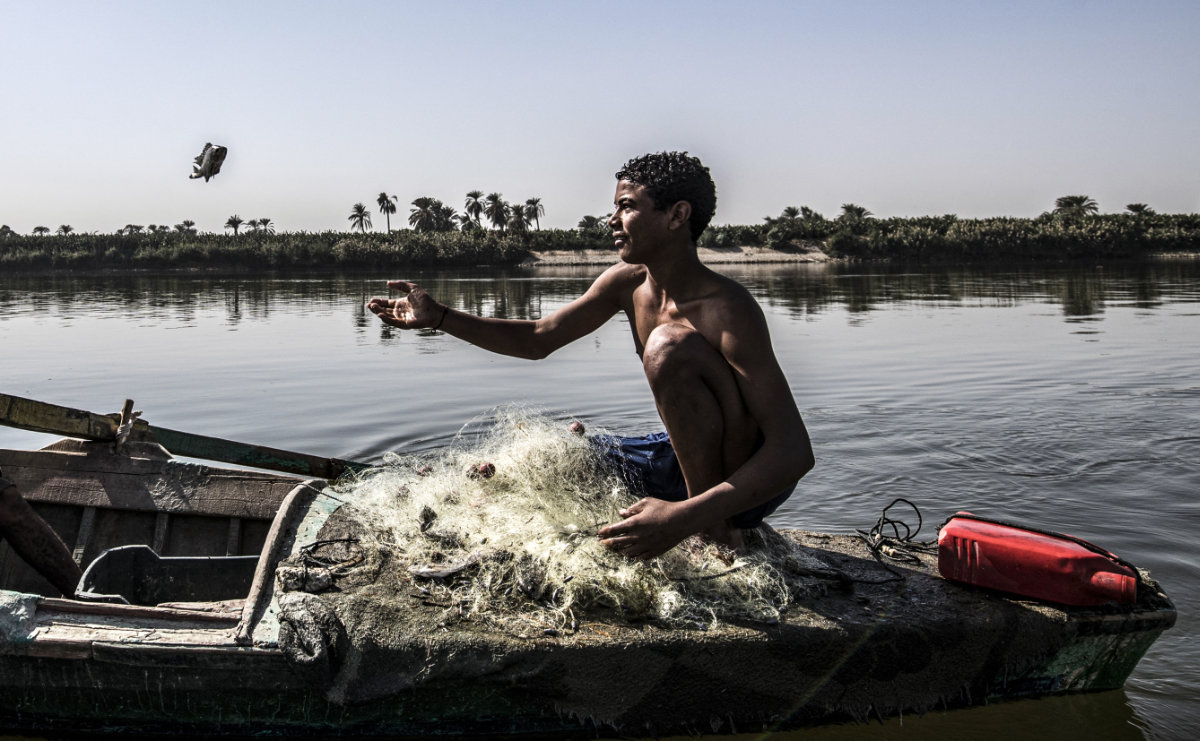
“This helps people to understand long-term trends in what is happening with fisheries through time,” said Kim Friedman, a senior fishery resources officer at FAO. “The initial push was mainly to do species identification guides and most of these were done with the museums of the world, so that a country could pick up a guide and know exactly which species it was. But then we started to also do posters and pocket guides so people could carry them in boats.”
The tools have evolved thanks to critical new work, supported by artificial intelligence, that could transform ocean-conservation efforts that are much needed given that many of the world’s fish species are in decline.
Once a very costly, time-consuming process carried out by observers on vessels, species tracking using advanced technology can now be so detailed that the data can even pinpoint the freshness of fish.

Edwin van Helmond, a fisheries scientist at Wageningen Marine Research, which is part of WUR, said that the potential for the use of AI and other technologies in supporting fisheries management is huge.
“The fact that detailed catch information can be collected through algorithms, without the presence of experts, makes data collection available in remote areas,” he told Arab News. “Data can be sent or collected at a later stage or directly stored in a data cloud and made remotely available for experts.”
He believes such technology will also greatly benefit food security in the long term, which is a major challenge facing the Gulf region, and also the sustainable management of natural resources, which begins with the collection of sufficient data.
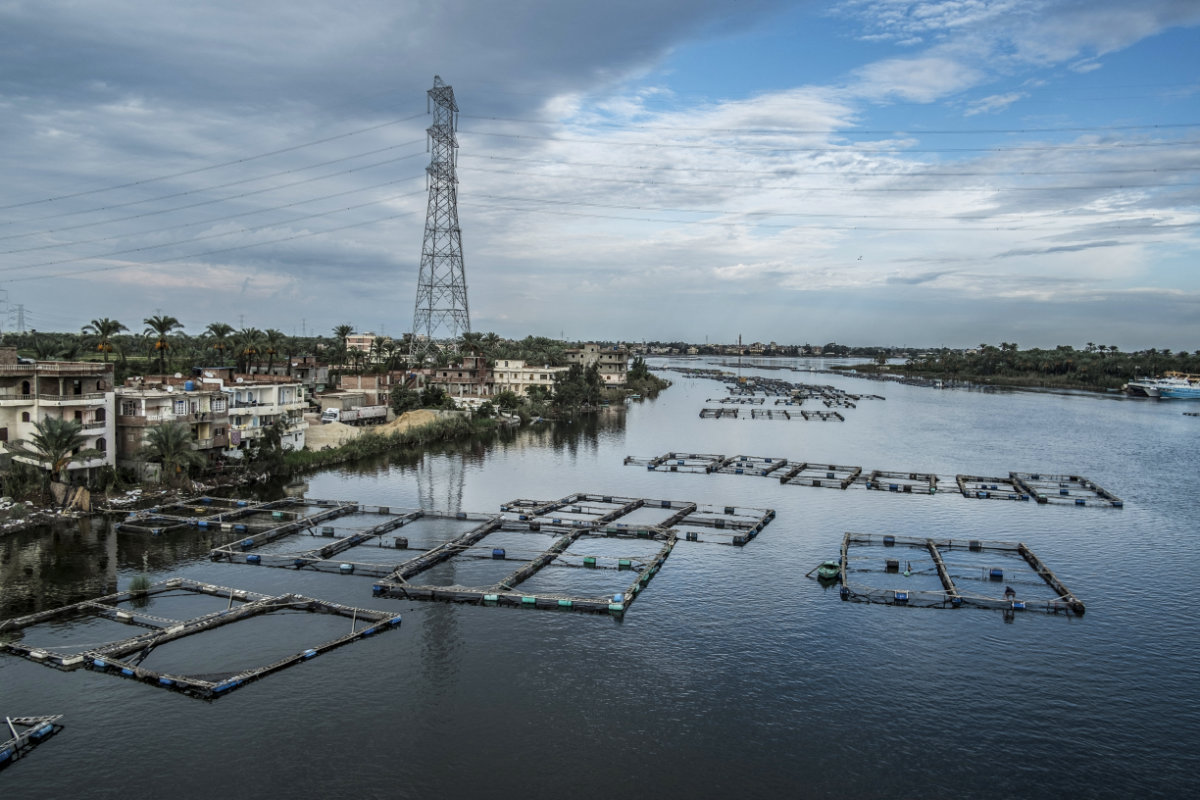
“To be able to perform a good assessment of the available resources, in this case local fish stocks, you need good data,” he said. “This includes detailed catch information by species, catch weight, and length frequencies.
“These variables form the input for any stock-assessment model, and with these models you can calculate sustainable harvest quantities without the danger of over exploitation, which equates to sustainable management of local fish stocks and long-term food security.”
FAO is now trying to make the technology more accessible so that more people in the industry can benefit from it, which in turn will help the organization expand its data sets. Comprehensive information about each species would be used to build algorithms that can identify species and their locations and recognize any changes.
FASTFACTS
Climate change, diminishing fish stocks and over-fishing are threatening coastal communities.
AI and mobile apps are helping fishermen worldwide engage in sustainable fishing practices.
Once such algorithms are developed, an app will allow users to search for specific species using imagery that can unlock information such as the features of the species, food values and other fisheries-related data.
“In the future, anyone, even a fisherman, could take pictures of his catch, send them off, get the species identification and, potentially, also some metrics like the size of the fish,” eventually developing a portfolio of trends in the waters in which they work, Helmond said.
The project in the Nile Basin, which will run for three to five years, will also look at certain country requirements in terms of languages, reporting and ensuring data sets meet the desired levels of security.
So far, e. The system mirrors recreational fishing identification efforts in European rivers and lakes, where communities fund systems that can identify catches and develop appropriate codes of practice among themselves.
“This then feeds back into understanding how well the different rivers or lake systems are doing and which ones maybe need to be augmented with hatchery-reared fish,” Friedman said.
“It allows people to link up with others who would not have potentially linked up in the past.”
A key to success will be data gathering by as many stakeholders as possible, said Friedman. The resultant benefits for all those involved will be the best possible algorithms.
“There is also an ability for us to start to collect pictures from around the Nile to tell people they can catch this type of fish in good sizes and condition in a specific location,” he added. “So (this addresses) issues about sustainability and also looking for market opportunities.”
The Global Fishing Watch platform, a collaboration between Google, nonprofit environmental digital-mapping organization SkyTruth and conservation organization Oceana, was one of the first attempts to combine AI with satellite data to observe fishing activity.
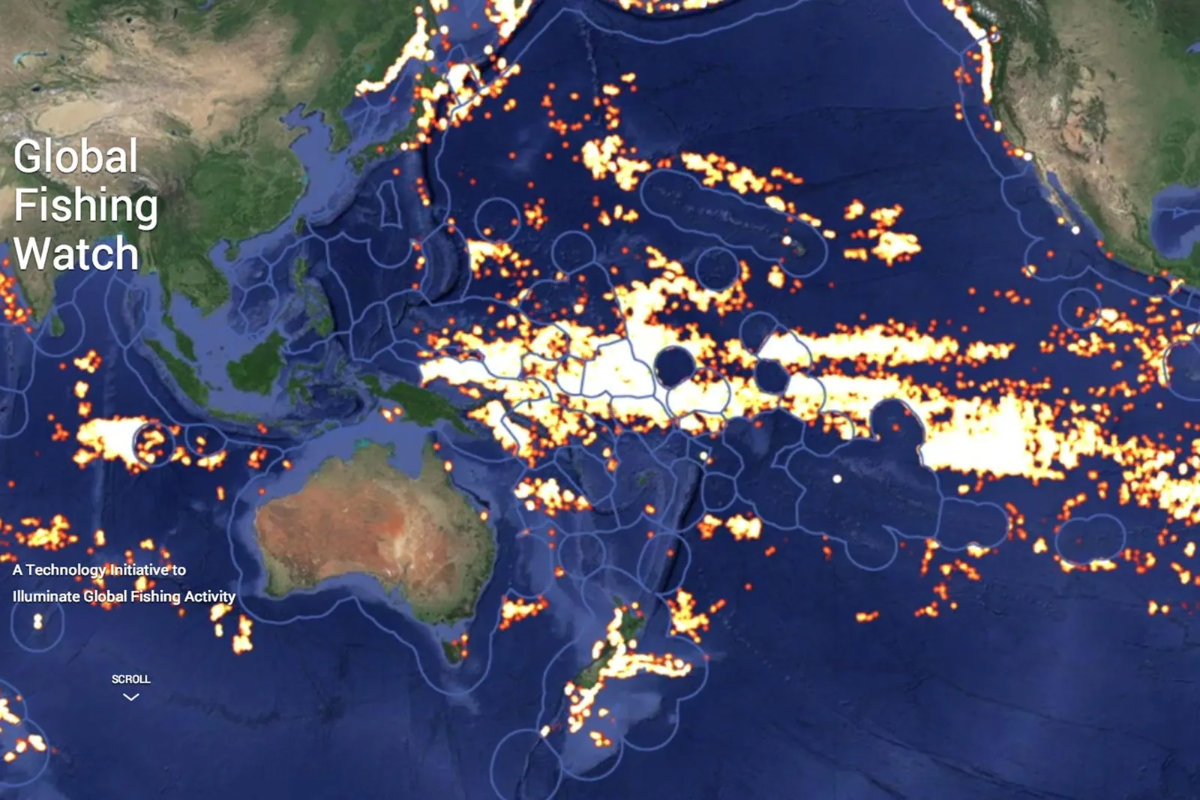
The technology also offers hope for efforts to address diminishing freshwater resources across the region, which has some of the lowest levels of fresh water in the world, mainly in the form of underground, non-renewable stocks. Freshwater reserves have fallen by 60 percent in the past four decades, according to FAO, and what remains is expected to diminish by 50 percent by 2050.
Advances in technology are expected to play a leading role in the creation of international policies to promote sustainable fisheries and aquaculture and ensure their growth, with artificial intelligence helping to address what is now a global environmental concern. The data that is gathered will allow fish and seafood retailers and customers to be more aware of whether what they are selling and consuming is sustainable.
Innovation also holds the key to making farming and the entire agri-food value chain more attractive, creating business and employment opportunities and helping the region to achieve food security, sustainable agriculture and the objectives of the UN’s Sustainable Development Goals.
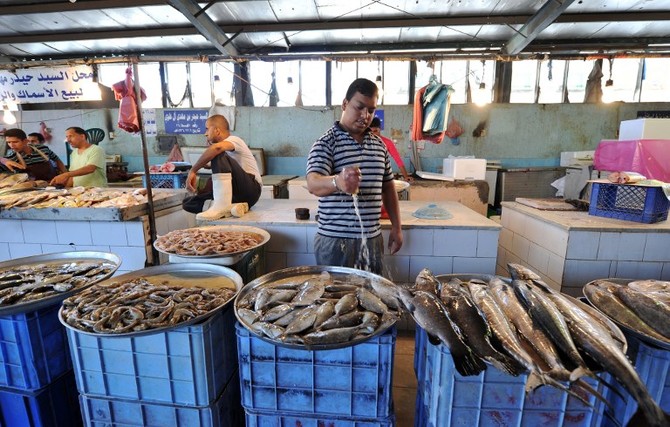
FAO Director-General Qu Dongyu believes the latest collaborative project is a vital step toward achieving this.
“A focused and strengthened framework between FAO and Wageningen University and Research will allow our partnership to better align efforts and resources for greater impact in meeting the 2030 Agenda for Sustainable Development Goals,” he said.
In addition to the Nile project, FAO and WUR are collaborating on several other initiatives related to the sustainable development of fisheries and aquaculture value chains.
In the African, Caribbean and Pacific States, for example, a joint project called FISH4ACP is providing expertise on multi-stakeholder partnerships that is contributing to food security and increased nutrition, prosperity and job creation.
Just last month, authorities in Saudi Arabia, which is responsible for 49 percent of the Gulf’s aquaculture, announced they are working to establish a regional center for fisheries as part of wider goals to diversify the national economy and address food security.
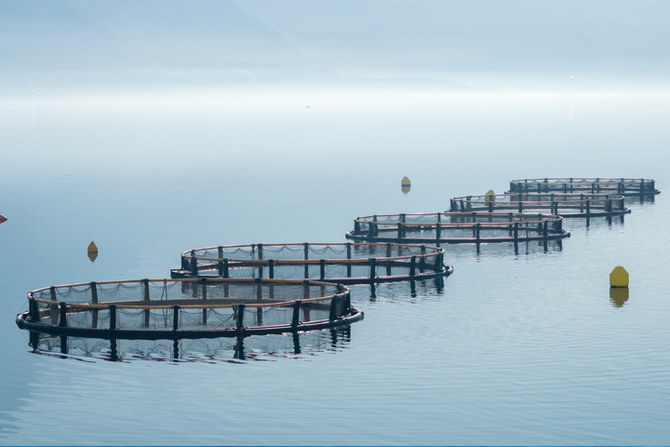
Friedman said that such initiatives have the potential to rapidly spread across the region and beyond.
“If we look back through time, all the regional guides that were put together to understand fisheries started off in certain regions and now are global,” he said.
“I suspect we will have the same thing happen not just for the Nile, but for inshore fisheries, pelagic (open sea) fisheries and so on, based on the opportunities that AI will offer us.”
Source: Arab News (https://www.arabnews.com/node/2060676/middle-east)
With the 2022 Sharm el-Sheikh Climate Change Conference (COP27) just months away, the European Union (EU) is strengthening its energy and climate relations with Egypt. The North African country is among the pioneers in the development of the green hydrogen industry, the energy of the future.
The European Union (EU) wants to accelerate its cooperation with Egypt on climate change through the promotion of renewable and new energies. This was the goal of Frans Timmermans’ trip to Cairo. With the Egyptian authorities, the vice-president of the European Commission discussed investment opportunities in the transition to sustainable and resilient economies, just a few months before the 2022 Sharm el-Sheikh Conference on Climate Change (COP27).
In its cooperation with Egypt, the EU targets key sectors of the economy, including water and energy. The European diplomat discussed the financing of renewable energy in Egypt, especially green hydrogen. Because of its strong potential in renewable energies, as well as port platforms to facilitate the export of green hydrogen and its derivatives, the country of the pharaohs attracts many investors, including Europeans.
This is the case of the German Siemens which is negotiating to produce hydrogen with electricity generated from renewable sources. And the negotiations have begun to bear fruit since the group has already signed a framework agreement with the Egyptian Electricity Holding Company (EEHC).
The EU also wants to strengthen cooperation with Egypt on the supply of liquefied natural gas (LNG). The organisation would also like Egypt to take an active part in the establishment of a Mediterranean partnership for green hydrogen, including trade between Europe, Africa and the Gulf countries. This regional cooperation is desired just months after the EU launched a €2 billion partnership with industry to accelerate research and development in the field of green hydrogen.
Source: Afrik21
As Ramadan is once again welcomed by Egyptians, authorities have introduced an environmentally friendly alternative to the traditional lanterns still known as "fanous" to illuminate and decorate shopping malls, hotels and offices without major environmental risks.
According to historians, the origin of Ramadan lanterns dates back to the time when young children in the capital Cairo used them to light the way for the Caliph (Muslim ruler and successor of Mohammed invested with spiritual and temporal power) when he was walking in the city. However, with the availability of electricity and the advancement of technology today, new and greener initiatives are trying to challenge this source of light in popular Ramadan tents, gatherings and city streets during the fasting period.
The new lantern proposed by the Egyptian government is an economical and environmentally friendly device made from recycled household waste such as fabric, newspapers, magazines, cardboard, spoons and plastic bottle caps. These lanterns are used to decorate and illuminate homes, streets and shops during the holy month of Islam in an environmentally friendly way.
In Egypt, the traditional lanterns, sometimes combined with plastic bags and tubes, have often had significant impacts on nature through fires. According to SciencePost, the new eco-lanterns inspired by Germany and the United Kingdom fly away thanks to the hot air delivered by the flame inside, while the rice paper used to make them decomposes on contact with water in about 10 days, making the risk of pollution zero. As for the bamboo used for other models of lanterns, it is natural and generally decomposes after 6 months.
Source: Afrik21
The accelerator programme includes national roadmaps and government dialogues in Egypt, India, Thailand, and Colombia — kicking off a local phase of 2050 net-zero global commitment
The Global Cement and Concrete Association (GCCA) launched on Wednesday a series of net-zero accelerator initiatives to help national cement and concrete industries decarbonise in line with the GCCA’s 2050 Net-Zero Global Industry Roadmap.
The first wave of accelerators will launch in Egypt, which later this year will be the host country for the UN’s Conference of Parties on Climate Change (COP 27), as well as in India, Thailand, and Colombia. These countries combined represent approximately 10% of global cement and concrete production.
Concrete — a local and durable material — is fundamental to overcoming sustainable development challenges, which many parts of the world are facing, such as population growth, increasing urbanisation, and the need for more resilient infrastructure and communities in the face of a rapidly changing climate.
Globally, cement and concrete manufacturing accounts for around 7% of carbon dioxide emissions. The global plan to eliminate these emissions by 2050 requires all parts of the world to accelerate their reductions in emissions.
The accelerator programme will identify the barriers to decarbonisation in target countries and recommend key actions. This includes encouraging government policies that can have an immediate impact, such as better recycling, the use of waste as an alternative to fossil fuels, and other circular economy practices. It will also include identifying lighthouse projects that can fully eliminate emissions over the next decades, such as carbon capture utilisation and storage technologies.
Mahmoud Mohi El-Din — the COP 27’s UNFCCC High-Level Champion of Egypt — said that “much of the infrastructure the world needs to overcome major global challenges — such as alleviating poverty, the need for clean water and energy, and safe, affordable housing — is yet to be built.”
“The full and willing participation of a sector which accounts for 7-8% of global emissions is critical to contribute to the goal of the 2015 Paris Climate Change Agreement to limit global warming below 2°C and as close as possible to 1.5°C.”
The accelerator programme comprises three elements — net-zero national roadmaps, including emission forecasts, reduction levers, policy needs, and the industry’s commitment; identification and funding exploration for large scale carbon cutting “Lighthouse Projects”; and policy dialogues with national governments to help accelerate the transition.
The GCCA is partnering with the cement and concrete industry on the ground and will work closely with policymakers, designers, and the construction sector to help overcome procurement and resourcing challenges as well as demonstrate the business case for greener technologies to be used on a wider scale.
Source:Zawya
Perhaps you’ve noticed that a growing number of companies are innovating new products and capturing new markets by focusing on sustainable products and services.
Companies are finding that having a well-structured approached to sustainability is popular with buyers, who are shifting more business to them as a result.
And companies with a clear sustainability focus are attracting, retaining, and engaging the best employees. Or perhaps you are reading this because you are personally convinced that your business should be doing more to protect the planet simply because it’s the right thing to do.
Whatever the reason, if you’d like your business to take steps in becoming more sustainable, this Webinar is a must-watch event.
We will discuss three straightforward actions your business should take this year to achieve better business performance and to prepare itself for a rapidly changing world.
Egypt launched its first national dialogue on climate change in the Red Sea resort city of Sharm El-Sheikh on Saturday as part of the country's preparations for hosting the UN Climate Change Conference COP27 in November.
Held on the same day Earth Hour is observed, Egypt used the occasion to announce the nation's National Climate Change Strategy 2050. Linked to the 2030 Sustainable Development Goals, the strategy promotes sustainable economic development and climate governance.
Opening the dialogue, Minister of Environment Yasmine Fouad said Egypt considers COP27 a conference for action, not pledges, and that it is essential the conference identifies actions that can mitigate the repercussions of climate change.
Protecting the planet is the responsibility of everyone — individual citizens, the media, clerics and civil society — and Egypt is focused on raising awareness about the effects of climate change, assisting people to help in the cause by rationing their use of water, energy, and resources, said Fouad.
Reviewing Egypt’s efforts to address climate change, Fouad stressed the importance of seawater desalination and wastewater reuse projects, schemes designed to protect the Nile Delta and to use renewable energy, and environment-friendly energy sources. She highlighted progress on the Benban project, a $2 billion solar park in Aswan where 30 solar power plants will eventually generate 1.5 GW of electricity.
Though Egypt’s greenhouse gas emissions comprise less that one per cent of the global burden, Fouad underlined that climate change, from seasonal weather changes to wildfires, represented a reality on the ground in everyone’s lives and everybody must be part of the solution.
Khaled Fouda, Governor of South Sinai, spoke about efforts in recent years to develop Sharm El-Sheikh’s infrastructure the better to allow the city to host international environment-related conferences.
Work is progressing around the clock to turn Sharm El-Sheikh into a green city and decrease its emissions, he said. The city has received 300 electric buses in cooperation with the Ministry of Environment, built a garage on an area of 100,000 square metres with electric vehicle chargers in cooperation with the Ministry of Transport, is working to convert 800 taxis to run on natural gas, replace 150 microbuses with new vehicles fuelled by gas or electricity, and is developing stations to include natural gas and electricity chargers.
The city is also cooperating with the ministries of tourism and environment to put in place regulations for hotels covering solar energy use, and is working to increase the number of green spaces, including a model garden in cooperation with the Ministry of Environment, and another garden near King Salman University.
Plots of land have already been allocated for the building of two solar energy stations, with a third planned for the Nabq area. Together, the stations will produce 20 MW.
Nazeer Ayad, Secretary-General of Al-Azhar’s Islamic Research Academy, said Al-Azhar was working to educate people about climate change at mosques, schools, institutes, and universities, and promote practices to reduce the threats. Al-Azhar is also publishing articles in its magazine to spread awareness about the importance of prioritising ways to tackle climate change.
The immediate task ahead, said Fouad, is to translate the National Climate Change Strategy 2050 into a set of tangible projects that promote mitigation and reduce emissions. To this end, she emphasised the importance of engaging young people, women and children.
As part of the participation in Earth Hour, observed around the world on 26 March, Egypt encouraged the public and businesses to turn off unnecessary lights and electrical equipment in an attempt to draw attention to the harmful impact of the excessive use of energy.
The theme of this year’s Earth Hour, Shape Our Future, threw a spotlight on the need to conserve energy and save the environment for coming generations.
Fouad said the Ministry of Environment had coordinated with other ministries and governorates to turn off lights at local landmarks and raise awareness about taking positive, serious steps to reduce the consumption of resources by change everyday practices that raise the level of harmful gas emissions.
Earth Hour, launched in Sydney, Australia, in 2007, is now marked by 190 countries. It grew quickly into a global movement, inspiring individuals, societies, businesses and corporations to take tangible steps to mitigate the effects of climate change, and has developed into a powerful instrument to channel the collective power of millions of people towards positive action to protect the environment.
Source: Ahram Online
Climate change and its effect on women was central to Egypt’s presentation at the Commission on the Status of Women, reports Reem Leila
President of the National Council for Women (NCW) Maya Morsi headed to New York to participate in the 66th session of the Commission on the Status of Women (CSW), held from 9 to 25 March.
Morsi spoke about Egypt’s efforts to achieve gender equality and the empowerment of all women and girls in the context of climate change, environment, and disaster risk-reduction policies and programmes.
Morsi said Egypt was among the countries most affected by climate change even though it accounts for only 0.6 per cent of global greenhouse gas emissions.
She noted the acceleration of national efforts and policies to protect the environment, due to its importance in advancing sustainable development, and honour the commitment to decent standards of living, in addition to Egypt’s commitment to relevant international conventions and above all the stipulation of the Egyptian constitution that every individual has the right to live in a healthy environment. “The government is committed to adopting the necessary measures to preserve and rationally use its natural resources,” she explained.
Regarding the impact of climate change on women, particularly their health, food security, and decent living standards, Egypt has taken many serious measures to implement a sustainable development model, she noted.
Egypt established the National Council for Climate Change, headed by the prime minister, she said. Moreover, Egypt’s cabinet includes the Ministry of Environment, headed by a female. There is a gender unit in the egypt, economy. an equal opportunity unit in the Ministry of Environment working in cooperation with the NCW, she said, adding the council also launched an approach to integrate women’s needs into the environment sector and to regulate environmental sustainability standards.
The government has taken many initiatives to mitigate the effects of climate change, while taking into account women’s empowerment such as raising their awareness of rural initiatives and eco-friendly agriculture methods, holding environmental camps to train women to engage in eco-friendly industries, raising awareness of the sustainable management of floods and launching an initiative to educate women on greenhouse gas emissions reduction methods.
Morsi pointed to the Decent Life initiative, launched last year, which makes women and their needs one of its main pillars. The initiative takes into account environmental dimensions and sustainability criteria and dedicates LE800 billion to 58 million Egyptians, 50 per cent of whom are women.
She said Egypt’s perspective on women, the environment, and climate change is based on seven actionable areas, including promoting gender-sensitive perspectives within adaptation, mitigation and responses, strengthening women’s voices and having meaningful participation in environmental governance. It is also based on leveraging opportunities for women within the transition to a green economy and applying women-specific perspectives in financing climate action.
Source: Ahram Online
Twenty years since the late Egyptian President Hosni Mubarak laid its foundation stone, the Grand Egyptian Museum (GEM) is inching closer to completion.
At nearly 500,000 sq. m and with an expected cost of more than $1bn, the GEM will be the world’s largest museum dedicated to a single civilisation. The displays will show objects chronologically from prehistory to the Greco-Roman period and it will also bring together the entire collection of Tutankhamun’s treasures—more than 5,300 artefacts—for the first time since his tomb was discovered a century ago by the British archaeologist Howard Carter in the Valley of the Kings near Luxor.
In order to make the GEM fully sustainable, its administration is working hard to transform it into Egypt’s first fully eco-friendly museum by reviewing all its services to make sure the institution meets the required standards for sustainability in all its environmental, economic, and cultural dimensions.
The review comes within the framework of the Ministry of Tourism and Antiquities strategy for sustainable development as part of Egypt’s Vision 2030 to preserve the ecological balance and the sustainability of tourism, as well as to encourage the sector to develop in unison with the transition to a green economy and environmentally friendly practices.
Atef Moftah, the supervisor-general of the GEM project, explained that the museum is in the process of obtaining Egyptian Green Pyramid accreditation, which requires special visitor services, dedicated transportation, ease of access, the creation of bike paths and parking places, the use of electric cars, the efficiency of water and energy consumption, especially in the museum’s green landscape, and the use of renewable energy resources.
The accreditation is being conducted in collaboration with the National Centre for Housing and Building Research.
“Approving the GEM as a green museum includes the management systems and the quality of its internal environment. It means improving its ventilation systems and the use of natural ventilation and air circulation that must comply with minimum required ventilation rates,” Moftah said.
“After it gains Green Pyramid certification, the GEM will be the first green museum in Egypt.”
The Hassan Allam Consortium, responsible for providing and operating the GEM’s facilities, is working hard to guarantee the operation of services at the museum’s official opening.
Representatives of the consortium presented their facilities management strategy during a meeting on Monday, with the latest designs for the services area and the marketing and promotional plan to ensure the best level of services in the GEM.
Visitors to the GEM will experience displays that combine the past, present, and future. They will be able to admire the ancient Egyptian civilisation, while at the same time enjoying recreational activities in line with the mission of the museum to play a fully educational role.
The GEM is scheduled to include an entertainment area for children, making it fully available to different age groups. All the selected brands of restaurants and shops in the museum’s services area will be major Egyptian brands.
The GEM’s marketing was also discussed at Monday’s meeting, including its website, social-media networking, and mobile application, in addition to its cultural and educational activities and other means of marketing to achieve the highest promotional returns.
This week the GEM received a collection of gigantic artefacts from the Egyptian Museum in Cairo’s Tahrir Square that included a pair of colossi of the ancient Egyptian deities Amun-Re and Mut, a red granite column of king Ramses II, a limestone statue of the goddess Isis holding her son Horus, and other gigantic artefacts.
Al-Tayeb Abbas, assistant to the tourism and antiquities minister for archaeological affairs at the GEM, said that every object had been examined and a report on its current condition drafted.
Eissa Zidan, director for the restoration and transportation of objects at the GEM, explained that the transport of the objects was critical because of the enormous size of the colossi.
The pair of statues of Amun and Mut are four metres tall, 186 cm wide, and 169 cm deep, he said, making it necessary to plan a special transportation route and remove any obstacles that could get in the way.
The colossi were reassembled on a metal structure in the late 1990s by a German archaeological mission headed by Hourig Sourouzian. All the pieces were installed in their original position, with places for missing segments kept empty so that they could be added later in the event that they are found.
Source: Ahram Online / The Art Newspaper
Energy efficiency as a contributor to success
Climate protection, efficient use of resources, rising energy costs, new supply models, and strict environmental regulations: For all these goals, energy is a decisive competitive factor, whatever the industry. There is therefore no alternative to increasing energy efficiency. A great challenge – but also a great opportunity. Because by making plants more energy-efficient, companies can also achieve considerable cost savings.
Energy efficiency in production – in reality
Energy-efficient production means more than simply reducing energy consumption, CO₂ emissions, or costs – it also involves linking energy and production data in order to analyze and optimize not only energy consumption but also the energy productivity of machines, plants, and processes. These measures provide the opportunity to achieve all-round improvements in process productivity and efficiency.


